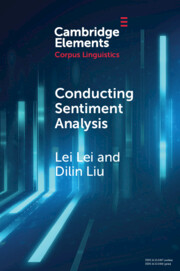Element contents
Conducting Sentiment Analysis
Published online by Cambridge University Press: 25 August 2021
Summary
Keywords
- Type
- Element
- Information
- Series: Elements in Corpus LinguisticsOnline ISBN: 9781108909679Publisher: Cambridge University PressPrint publication: 23 September 2021



